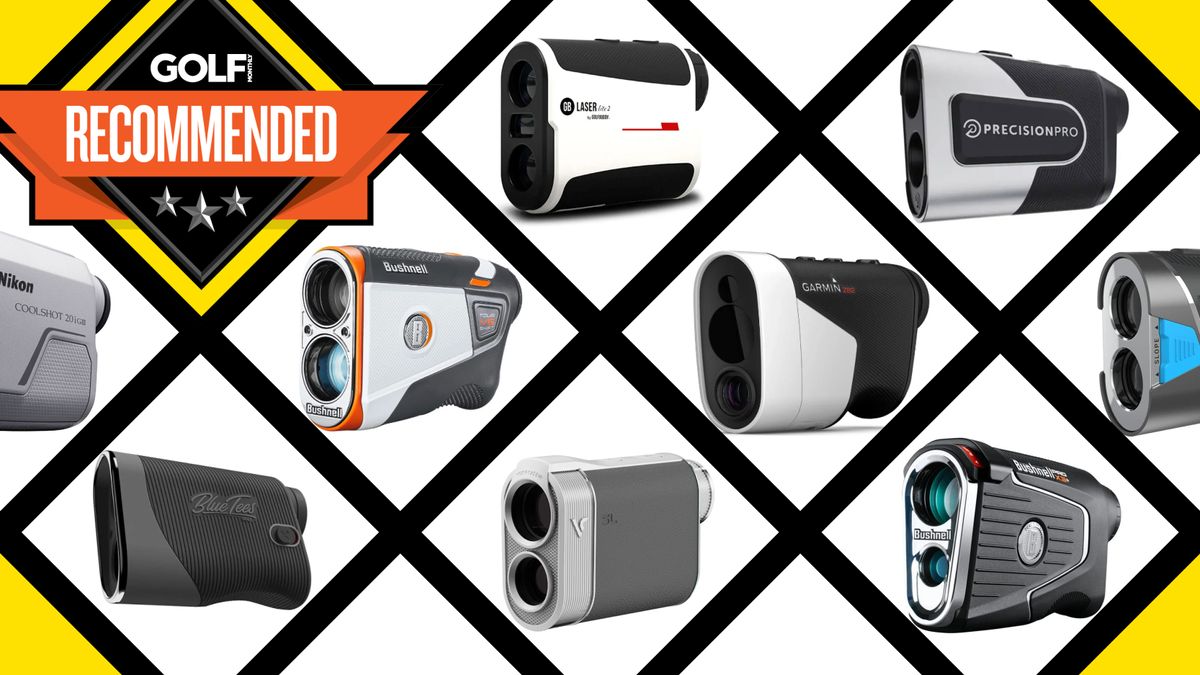As we all know, golf is hard, so anything that makes life a little easier for us out on the course should be embraced. It might be a pair of the best shoes to keep us comfortable on that four hour walk, or one of the best lightweight golf bags to make carrying easier. Lots of things can help us out on the course, but GPS technology is one of the biggest advantages available to the modern golfer.
Knowing how far you have to the flag is not going to guarantee that you hit your ball close, but it will ensure that you are giving yourself the best chance by using the correct club. You have have three options when it comes to GPS. There are standard GPS devices, GPS watches there are rangefinders, which we are looking at here.
Gone are the days where players would have to search for the sprinkler heads or the 150 yard marker and then try to estimate distances based on that. The modern golfer can simply pick up their rangefinder, point at the target and zap it to get an exact yardage number. It’s really that easy!
There are other benefits too. You needn’t only use a rangefinder to zap the flag. You can also use them to measure the distances to reach or carry hazards like water and bunkers. Knowing how far the targets are allows you to avoid mistakes, always use the correct club and therefore lower your scores. There are different levels of rangefinder, some are basic point and shoot while the more expensive versions are packed with other handy features. For example, the best golf rangefinders with slope will take into account change in elevation to make sure you get the right numbers as well.
The accuracy of rangefinders is extremely impressive, even the ones at the lower end of the price scale are often able to go toe to toe with the most expensive ones when it comes to giving an accurate number. Accuracy isn’t the only thing you should be looking for though. When choosing a rangefinder you should also be thinking about ease of use, durability, longevity, waterproof protection and some degree of value too.
While all three types of GSP have their pros and cons, many golfers prefer rangefinders over the best golf watches and best golf GPS devices due to the convenience, simplicity and speed on offer. Another key factor is that rangefinders run on batteries, which means they can be left in your golf bag between rounds without the need for regular charging.
Technology in golf has come such a long way in recent years that you are truly spoilt for choice when deciding which rangefinder to buy. Price is probably the first thing to consider. If money is not a concern then maybe you would go for a model used by those on the professional circuit? If you don’t want to spend too much then you will be wanting one of the best budget golf rangefinders that won’t break the bank.
At Golf Monthly we are here to help and, after extensive testing, we’ve picked out the best models, ranging from the cheapest to the most expensive.
The Quick List
Bushnell Tour V6 Shift Rangefinder
A simple to use, highly-accurate Bushnell rangefinder with bright and clear optics, seamless slope functionality and convenient carry options.
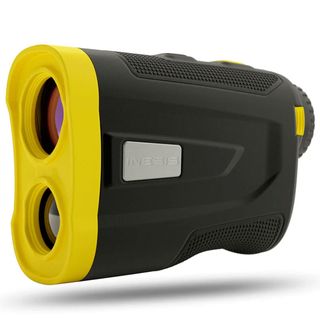
Inesis Golf 900 Laser Rangefinder
The Inesis Golf 900 is a high-quality rangefinder that boasts similar accuracy to some of the leading models on the market at a much lower price.
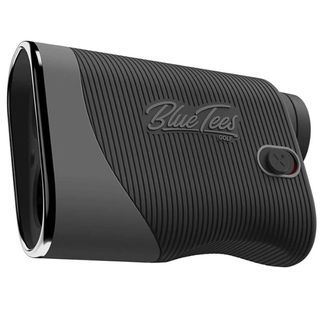
Blue Tees Series 3 Max Laser Rangefinder
A premium looking and performing laser without the punchy price. The experience was near faultless with the display showing accurate distances quickly.
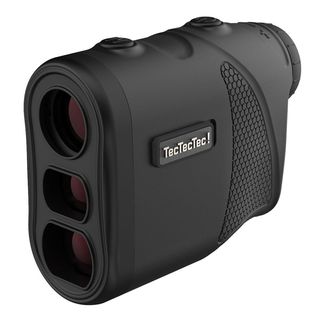
TecTecTec KLYR Laser Rangefinder
The KLYR is fast and accurate while also offering features such as target lock, slope, and we also liked the different colors available in this laser.
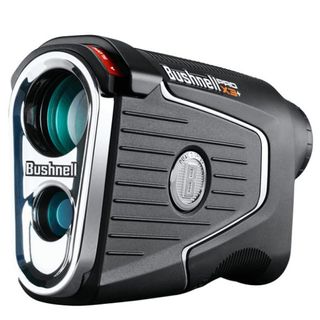
Bushnell Pro X3+ Laser Rangefinder
Will you make use of the clever new wind speed and direction feature? Even if you don’t, this premium laser ticks pretty much every box.
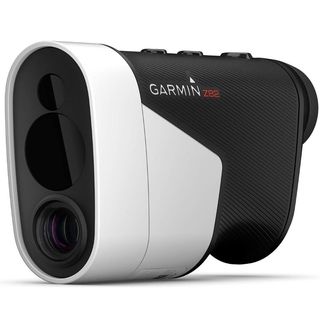
Garmin Approach Z82 Laser Rangefinder
The full hole map is a unique feature that stands out from anything else currently on the market. Pricey as it is, the Garmin Z82 feels worth every penny.
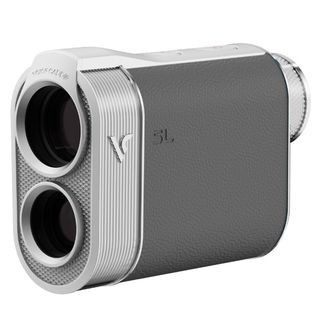
Voice Caddie SL3 Active Hybrid GPS Rangefinder
The new SL3 from Voice Caddie is everything you want in a distance measuring device and then some by combining laser and GPS functionality.
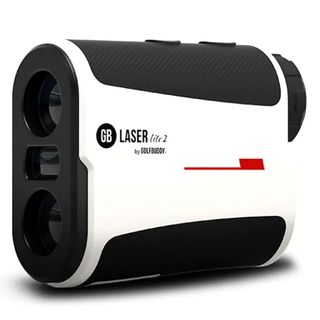
GolfBuddy Laser Lite 2 Rangefinder
Given the features and ease of use and this price point, the value for money on offer here is exceptional. They’ve refined over previous model as well.
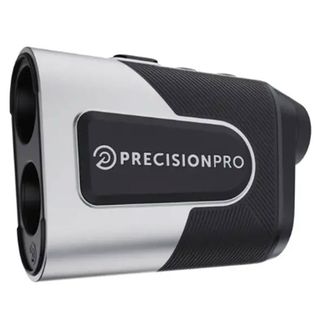
Precision Pro Titan Elite Laser Rangefinder
The Titan Elite is arguably the best rangefinder release of 2024. Producing swift, accurate yardages with a crystal clear display, it also has some excellent features such as MySlope, and Find my Precision Pro.
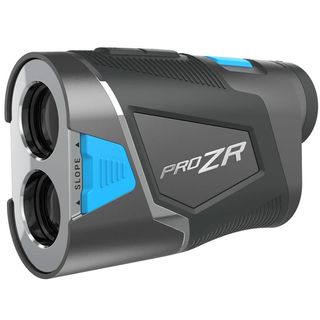
Shot Scope Pro ZR Laser Rangefinder
We put the Shot Scope Pro ZR laser rangefinder through its paces…

Zoom OLED Pro Rangefinder
The extremely clear and crisp OLED display is very impressive, and functionality in abundance. This very simple to use, compact rangefinder has all of the features that anyone would need.
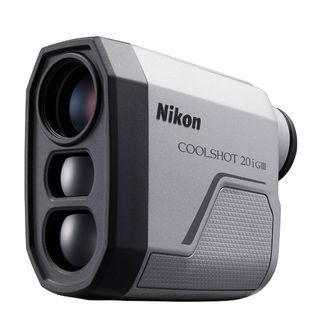
Nikon Coolshot 20i GIII Rangefinder
The clarity of the screen is excellent and it has all of the features and range you could ever need. Its extremely compact body doesn’t take up much room in the bag and provides a comfortable hold.
Best Golf Rangefinders
Why you can trust Golf Monthly
Our expert reviewers spend hours testing and comparing products and services so you can choose the best for you. Find out more about how we test.
Best Overall
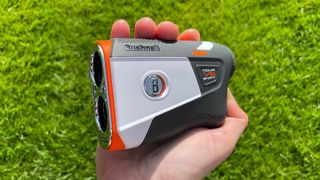
(Image credit: Future)
Our top pick is the Bushnell Tour V6 Shift Rangefinder, which uses improved electronics and an improved algorithm for finding the flag to provide enhanced accuracy and consistency over the previous Tour V5 model. The Slope Switch technology from the previous model carries over into the V6 to ensure slope adjusted measurements.
We loved this product in testing. Locking on to the flag was a seamless experience but we’ve come to expect that from Bushnell products. For those who maybe don’t have the steadiest hands, the Jolt technology along with the flashing red ring combine to give that extra bit of reassurance for those who need it. We loved the new display too, which in our experience is clearer and brighter than most other rangefinders, while it is also worth mentioning that the V6 also boasts IPX6 protection which means it will perform even in the worst of the elements.
The V6 has been given an upgrade in looks too and in our view the grey and white color scheme with flashes of orange certainly looks slicker and more modern. It has a decent weight to it, not the heaviest we’ve tested but enough that it doesn’t wobble about in the wind.
Finally we need to mention the cost. It is at the top end of the price spectrum which will put many off, but if budget is not a concern and you just want a top all-round laser rangefinder, then this is worth it and that’s why it’s our top pick.
Best Budget
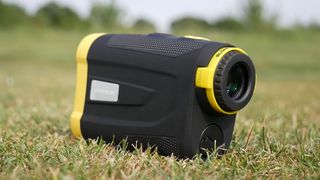
The Inesis 900 Laser Rangefinder
As you will see in some of our other equipment guides, we are big fans of Inesis gear due to the excellent combination of quality and value on offer, and the 900 Rangefinder is a great example of why we like Inesis so much. It sits very much at the budget end of the laser rangefinder price spectrum, yet the performance is very solid and the overall value for money is excellent.
It certainly outperforms its price and to prove this we actually put the Inesis 900 up against a more expensive model (the Bushnell Tour V5 Shift) and we found it compared very well in terms of accuracy and ease of use. The 900 Rangefinder features a First target priority function that isolates the flag. Measurements are confirmed by vibration and in our testing we found it is accurate to +/- 1 yard. It has a Slope Compensation switch so you can toggle on and off slope-adjusted distances and you can set it to yards or meters.
The 6x magnification gave us a clear view when looking through the viewfinder and during testing we found it to be very user friendly. We liked the weight and how it sits in the hand and the durability on offer also impressed us. Finally, it comes in a very sturdy case along with some instructions for use, a cloth for cleaning the lens of the rangefinder, a CR2 battery as well as a clip that allows you to attach the rangefinder to your bag.
Best For Style
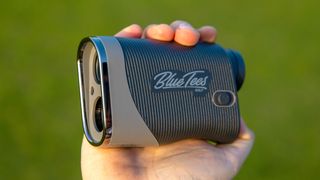
(Image credit: Future)
Blue Tees Golf is a relatively new name in the industry and you may not yet be familiar with the brand. They have made a big impression on us though as they offer premium, great looking products at affordable prices. The Series 3 Max rangefinder is a perfect example of that, especially in the aesthetic department.
The product is available in three colors – navy, pink and black – and we love the sleek and stylish look and the thin profile. There’s more to this than just a great look though.
One of our favorite features in testing was the crystal clear display which is really sharp and crisp. In terms of performance, the lock and vibration features were a highlight as they provide assurance to the user that they have the correct target, meaning less guesswork or time spent on reshooting to double and triple check for distances.
Another feature that really stood out to us in testing was how quickly the distance was displayed. It was more or less instant which enhances the overall experience. All in all, and aside from the magnetic strap which we think could be improved, this is an eye-catching device that is competitively priced and performs well.
Best Magnetic
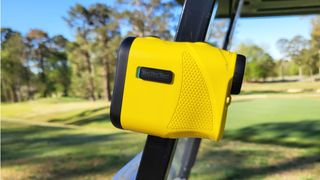
The TecTecTec KLYR rangefinder on a cart
(Image credit: Golf Monthly)
The TecTecTec KLYR rangefinder recently made our list of the best budget golf rangefinders and really is a standout at its price point. It’s compact design makes it very easy to handle and it’s lightweight too, coming in at less than 1.25 pounds.
In our testing we found that it offers a clean, vibrant display and we were suitably impressed by how quickly it retrieved yardages. It was extremely accurate and boasts many of the features that golfers look for in a rangefinder. These include slope functionality (which can be disabled during tournament play) as well as target lock vibration.
It has a maximum range of up to 800 yards but we found that it fares well when shooting from longer distances. A strong magnet on its exterior allows the device to be secured to a riding cart during play, while it also comes with a magnetic belt clip so golfers can wear the device to provide handy access when needed. The KLYR is available in three stylish colors: yellow, black, and white and considering the price point we think the KLYR really stands out because of its range and how quickly it captured yardages.
Best For Accuracy
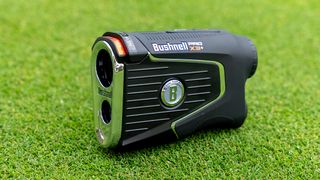
The Bushnell Pro X3 laser on the ground
(Image credit: Howard Boylan)
We mentioned above how Bushnell are the standard bearers when it comes to rangefinders, and the second Bushnell model to make this list is the latest X3+. This rangefinder factors in elements like distance, slope, temperature and barometric pressure (elevation), to ensure you can get the most accurante yardages every single time. This model is different to the standard model because of a new wind speed and direction feature.
Our testing showed this laser picked out the flag almost immediately and the number was confirmed by the vibration and flashing red ring. We were particularly taken with the Dual Display button which changes the graphics from black to red to make them more visible in duller conditions. That’s a really nice feature.
A slight negative was that we found the new wind feature to be a bit of a faff to calibrate properly and pair correctly with the app. When you did manage to get all of the figured out it is a nice feature because you can get a clearer idea of what number might equate to a one or two-club wind for you. This feature is not allowed in competition though so if you are playing competitively be sure it is switched off.
You can pair the Pro X3 device with the Bushnell Golf app (make sure you download the new version) via Bluetooth which allows you to alter the settings, save stats and course information and update the firmware when required. The app is free when you purchase any Bushnell product and it provides full color GPS hole maps and flyovers so you aren’t ever caught out by blind shots.
Finally, the X3+ is waterproof and has a good weight to it so it will suit those with shaky hands and performs well in windy conditions. It isn’t cheap though but as with the V6 model above, if money is no object this is a great choice.
Best For Features

When it comes to innovative features, the Garmin Approach Z82 leads the way. Packed with much of the functionality you’ll find on the best Garmin golf watches this is much more than a ‘point and shoot’ laser as it combines the best GPS technology with the capabilities of a laser to give you the best of both worlds.
When you look through the viewfinder of the Z82 you will see 2-D overlays for both full-color Course View and Green View. The mapping is displayed on the left-hand side of the lens view, showing distances to hazards and the green. Then you can just use it the way would would a standard laser by pointing at the flag and allowing the the flag finder feature to locks on.
Other features include a Laser Range Arc, which will be drawn on the green at the distance ranged to the flag, so the golfer can see if the pin is in the front, middle, or back of the green. The arc can also be used to see what else is in play when ranging other targets on the course. Similarly, when on the tee you can look at the map in the viewfinder and there will be an arc displaying where your drive is likely to end up based on the number you enter for your average driving distance.
Another feature we loved in testing was the PlaysLike Distance feature that accounts for slopes and wind. The Pin Pointer feature is something you won’t need too often but is really handy when you do. Basically it’s like a compass and points to the middle of the green on blind shots so you know which direction to hit.
All in all this is one of the very best golf rangefinders you can buy and is absolutely packed with useful features. As you would expect, it carries a premium priced but you get what you pay for. The user experience is second to none and the way GPS technology and hole maps have been incorporated into a rangefinder makes it a joy to use.
Best Display
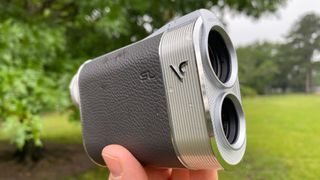
(Image credit: Mike Bailey)
We love the Voice Caddie SL3 Active Hybrid GPS Rangefinder so much that we selected it for our Editor’s Choice List. The SL3 has an accurate and easy-to-use laser rangefinder combined with a color touch LCD screen under the eyepiece that allows you to change settings. It also displays maps of the holes and the greens along with all sorts of useful information. This GPS functionality and display really enhances the user experience.
Our testing showed this to be fast and accurate, while the display is very easy to read. Adjusting the brightness of the OLED two-color display is easy thanks to a button on top and locating our target was straightforward too because of a new pin-filtering feature called Pin Tracer. We found that the slope element also worked well, although as always, remember to switch that off during competition play. In terms fo the user experience on the course we found that the SL3 is sleek and easy to handle, and it fits nicely in the hand. It comes in a nice leather carrying case complete with magnetic closing flap, and all in all this is an excellent product well worth the five stars we gave it in our review.
Best Lightweight
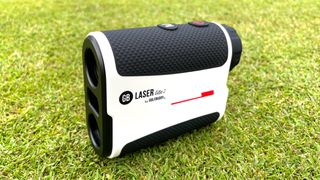
(Image credit: Future)
Combining a budget price with good performance, the original Laser Lite was a favorite of ours so it’s fair to say we had high hopes for the Laser Lite 2 as well. We were not disappointed. As the same suggests, it is definitely light, actually coming in at three grams lighter than the previous model. It is also thinner and more compact. While this is a good thing for those with a steady hand who want to travel as light as possible, if your hands aren’t so steady then you will need something heavier to be able to lock on to your target.
In terms of accuracy, our testing showed that the Laser Lite 2 produced similar numbers to the Bushnell Tour V6. The non slope numbers were pretty much identical, as were shots going uphill, but it needs pointing out that there were larger differences on downhill shots so that’s something to keep in mind.
One feature we really liked was the Scan Mode which we found to be very useful, especially when assessing tee shots. You hold down the main button and scan the surroundings, and the distance number changes as you scan, so this is ideal when looking at hazards or spots to lay up. It’s also worth mentioning that although the Laser Lite 2 is IPX4 water resistant, it isn’t going to be completely safe in heavy downpours so be careful.
Most Cutting Edge

(Image credit: Future)
This is a truly unique rangefinder that has cutting edge technology at its core. The Titan Elite from Precision Pro integrates with the Precision Pro Golf app to provide the user access to a multitude of cool features. One of these is a slope mode that can actually sync up with MySlope to personalize the slope measurement to your particular ball flight, which we found to be really high end tech. We also loved the brilliant Find My Precision Pro feature which will send you a notification if you happen to leave your rangefinder behind or lose it on the course.
Another plus point is that connecting to the app is probably the simplest we have experienced on a device of this type. Sometimes it can be a real pain to figure out and the process is not straightforward, so this was a breath of fresh air. The screen performance impressed in testing too. It felt intuitive and we like that it only presented us with necessary information. Some other models out there can overload you with cluttered displays making the user experience less enjoyable.
The visual target lock feature gave us lightning quick feedback with no lag times, while the zapping process was easy thanks to the pulse vibration and ripple effect around the reticle. In terms of magnification, the Titan has 6x magnification which seems to be pretty standard with the top models these days.
The case is a simple yet premium-looking all-black, and the rangefinder itself is a slick black-and-grey combo with fairly subtle branding on the magnet. Additionally it has a best-in-class IP67 dust and waterproof rating.
Best For Low Light
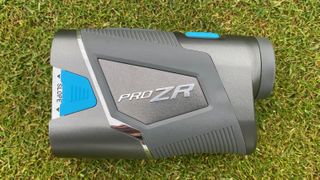
(Image credit: Future)
After some thorough testing we can say that the Shot Scope Pro ZR is a worthy addition to this list. The Pro ZR has been equipped with a ‘DuraShield Hardshell’ which as the name suggests is designed to withstand all sorts of punishment from both player and nature too, making this one of the most durable rangefinders around.
In our testing the first thing that struck us about the ZR was the weight. At 340g it felt noticeably weightier than its competition. While generally in golf terms lighter is best (think shoes, bags, jackets etc) when it comes to rangefinders many golfers need the extra stability in order to accurately zap the flag and we enjoyed the feel of the Pro ZR in our hands.
It has a reported range of 1500 yards which is impressive, albeit unnecessary for golf, while we also enjoyed the crystal clear images on display plus the rapid-fire detection which gave us yardages very quickly. Another feature we really liked was the dual optics option. This is something we’ve seen on a few other rangefinders and its an excellent addition. Basically it allows the user to switch the text and numbers between red and black depending on the light conditions just by clicking the R/B button on the top of the device.
The ZR has a magnet on the side to attach to a trolley or buggy and the aesthetics really struck a chord with us too. The overall grey is very sleek looking and the blue accents of the buttons compliment it well, while the little flashes of chrome give a really premium feel to the finish. The packaging has a premium feel too with the case in particular feeling very sturdy.
Best Clarity
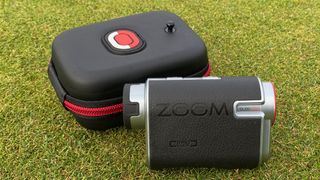
(Image credit: Future)
The Zoom OLED Pro rangefinder promises to be up to three times brighter and a whopping five times sharper than previous models when it comes to optics. When we read that we had to get a model to test so we could find out for ourselves, and yes the optics are outstanding.
This is achieved by the use of OLED (Organic-Light-Emitting Diodes) which is found in high-end television sets. As you would expect, this definitely made the visuals significantly clearer out on the course and we found it to be genuinely helpful even without using the yardage function, as just using the lens to scope out a hole gave us a great feel for the hole we were playing.
Through the lens we were able to see the contours of the green from a long way out, which really helps to inform course management decisions such as which side of a green leaves an easier chip or putt. Another thing we liked was that you can change the focus of the rangefinder by twisting the lens to give a sharper view to suit your own vision.
We found the functionality of this device to be very smooth and intuitive. For example, if you want to switching between yards and meters, or turn slope on and off, its a simple flick of a finger. You can also nip between ‘Flagpole scanning’ mode and a free scan with one press of a button too, making this very easy to use.
Most Compact

(Image credit: Future)
Last but by no means least in this guide is a model from Nikon, a brand better known for cameras and synonymous with high-quality imaging products. In recent years they’ve dipped their toes into the rangefinder market with a good deal of success and the 20i GIII continues to build on the good work done by the brand in this field.
An Editor’s Choice pick, this device is packed to the brim with useful features that will enhance the user experience and we really enjoyed testing this product. The multilayer-coated 6X magnification and super clear screen really stood out for us and we found that picking out flagsticks was exceptionally easy in all lights, while the ‘Locked On Quake’ feature vibrates gently to confirm you have zapped the flag.
Measuring 91cm x 73cm x 37 cm and weighing only 130 grams, it is certainly one of the most compact laser rangefinders on the market but we feel that its sleek design really compliments the dimensions well and as such it is one of the cleanest-looking rangefinders we’ve seen. It’s only a tad larger than a smartphone so it sits very well in the palm of the hand and is easy to use.
Specifications table
| Model | Range | Magnification | Protection | Battery life |
| Bushnell Tour V6 Shift Rangefinder | 1,300 yards | 6x | IPX6 | N/A |
| Inesis Golf 900 Laser Rangefinder | 5-1300 yards | 6x | Certified IPX2 | 5000 actuations |
| Blue Tees Series 3 Max Laser Rangefinder | 900 yards | 7x | Water resistant | 3500-4000 actuations |
| TecTecTec KLYR Laser Rangefinder | 800 yards | 6x | Water resistant case | 40-50 rounds |
| Bushnell Pro X3+ Golf Rangefinder | 600+ yards | 7x | Rubber-armored metal case | N/A |
| Garmin Approach Z82 Rangefinder | 450 yards flag | 6x | IPX7 Waterproof | 15 hours |
| Voice Caddie SL3 Rangefinder | 1,000 yards | 6x | N/A | Laser mode 45 hours, GPS mode 20 hours |
| GolfBuddy Laser Lite 2 Rangefinder | 5-880 yards | 6x | IPX4 water-resistant | 3,000 – 5,000 actuations |
| Precision Pro Titan Elite Laser Rangefinder | 999 yards | 6x | IP67 Dust/Waterproof | USB-C Rechargeable |
| Shot Scope Pro ZR Laser Rangefinder | 1,500 yards | 6x | Water resistant case | 4,000 actuations |
| Zoom Oled Pro Rangefinder | 1,200 yards | 6x | Protective case | 5,000 actuations |
| Nikon Coolshot 20i GIII Rangefinder | 800 yards | 6x | IPX4 water-resistant | Approximately 10,000 times |
How we test for the best golf rangefinders
At Golf Monthly we have a comprehensive testing procedure around rangefinders. This involves using different models out on the course over a number of rounds. Whatsmore, we endeavour to use them in different conditions too as this gives us an idea on how particular models deal with sunlight, rain and wind. This is vitally important when evaluating the product.
Our entire team here are regular golfers so rangefinders get a thorough testing and we will often compare them to one another side by side to test for things like accuracy, waterproofing, durability and other features. That way we can give honest and insightful feedback to you, the reader. Technical Editor Joel Tadman oversees the entire technology section and he does a lot of the testing around these devices. The final thing we wanted to mention in this section is no manufacturer can buy a good review. Our testing team reviews golf equipment and makes its own opinion on how good or bad the product is.
How to choose the best golf rangefinder
So you have decided you want a rangefinder, but what are some of the things you should be aware of before buying? Let’s take a look.
Accuracy
This is without doubt the most important factor when buying a rangefinder. If it isn’t accurate, it will provide misinformation which could lead to you playing the wrong club and a bogey or two may ensue. Accuracy is what usually separates the models we have selected above with the ones you can find on Amazon, so be wary of how inconsistent and unreliable some very cheap models can be.
Range/magnification
Different models on the market have varying ranges so it is worth having a look at product specifications to see the numbers. Additionally, be aware on which models come with magnification as well because this really helps you zoom in and lock onto the target, which means you can get a reliable distance number. Range is less important than magnification as while it might sound impressive being able to see something 1500 yards away, it isn’t something you will actually need on the golf course.
Display
How clear is the display and how easy is it to read? Ultimately because we have tested most rangefinders on the market we think we can give good insight here with models like the Zoom OLED Pro offering outstandingly clear visuals. There are also several other models on this list that have good displays so be sure to have a read of our in-depth reviews as well. Ultimately a good model should have clear, bright optics, magnification, and an easy to read display when contrasted with the background.
Battery Life
We would recommend being aware of what kind of battery a particular laser uses. Additionally have a think about these questions – how long does the battery last on a charge, is it rechargeable, and how many charge cycles is it good for? We have found most rangefinders run on CR2 batteries which last 6-12 months, and are often rechargeable which is good value. Additionally you can also buy these on Amazon too.
Finally, make sure that the rangefinder you’re interested in doesn’t require an unusual type of battery that is expensive or difficult to source.
Slope
Do you want your model to offer slope measurements too? If so check out the technical specifications of certain models. Always be careful here though, because if a model is not clear on whether it is in slope mode or not, if you use it in competition you could be in trouble.
Waterproofing
A good model will work just as well in the rain as it will in the sun, which makes waterproofing important. Here we would recommend doing research on which models offer full waterproof protection, and those that are only water-resistant as that can be a big difference especially if you play a lot of golf in the rain.
Protection
Linking with the above point, good rangefinders have to be able to sustain a drop or two because we all drop things every now and again. Here, check out which models have some degree of impact resistance, and be sure to check if the laser comes with a case because lots of models come with strong cases that conveniently clip onto your golf bag now.
Convenience
Speaking of convenience, rangefinders have to be quick and easy to use. Get it out, measure the flag, put it away in its case. If a laser is complicated or takes a while to display a measurement, then it adds time rather than saves it. To work this out, we would often recommend trying out some models in retailers and pro shops.
Looks
Admittedly this is not as important as other factors we mentioned above, but at the end of the day you should like the look of your rangefinder as well because nobody wants some big, bulky, ugly thing attached to the bag right? As such there are loads of different designs and cool finishes out there ranging from the ultra-premium (Voice Caddie SL3) to the more simple designs like the TecTecTec KLYR. Of course there are lots of different colors to choose from as well.
Magnetic Mount
Do you want your rangefinder to have magnetic elements so you can just attach it to your cart rather than having to take it out of its case all the time? If so then there are models out there that have technologies to make this possible – two of the best are the Bushnell Tour V6 and KLYR from TecTecTec. Precision Pro also makes several models with this design feature.
Budget
Be aware of how much you are willing to spend on a laser because there are good models at every price point these days. For example the Inesis 900 is one of the cheapest on this guide and we thought it offered excellent performance, whereas if you want to spend more and go towards the premium end of the spectrum, you can also do that with models like the Garmin Approach Z82.
FAQs
What does a rangefinder do?
Essentially the main function of a rangefinder is to give you as accurate yardages as possible. While some of them have many other features, primarily it’s there to tell you how far away the flag is, or is that fairway bunker in range. Nobody wants to be out on the course and have no idea what distance a bunker or ditch is. Therefore, a rangefinder can help acquire yardages and build confidence.
How accurate are laser rangefinders?
Accuracy will be dependent on the model as some are better than others but we have found from our testing that most are accurate enough to give you a clearer yardage, which will then inform which club to use.
Are golf laser rangefinders worth it?
Yes, absolutely. We think laser rangefinders are definitely worth it as they speed up play, last a long time, are convenient and simple to use, offer in-depth detail of the shot you face, and can sit easily on your golf bag. With a laser no longer do you have to guess yardages because you can just zap the flag or hazards to help you plot your way around the course.
Should my device offer slope measurements?
More and more lasers these days offer the ability to measure yardages that take into account slope. It can be very convenient especially when faced with steep downhill or uphill shots and if this is very important to you we would always recommend getting a model that has a slope function that can be turned on and off as you are not allowed to use it in competition.
Should my laser rangefinder be waterproof?
Ideally yes we think a good laser rangefinder should offer some degree of protection from water and rain. After all, golf is an outdoor activity and the weather can change dramatically over the four hours we are on the course. We would therefore recommend taking a look at product specifications to see the level of waterproof protection on offer.
How much does a rangefinder cost?
Prices vary anywhere from under $100 to over $400. At the end of the day it depends how much information you want from your rangefinder. If you’re not bothered about high end tech and detailed features then the cheaper ones will provide you with the basic information you need. If you do love your technology though then a more expensive model will likely fit that category and there are some great ones to choose from.
We hope you found this guide on the best golf rangefinders informative, and if you want more tech, check out our best golf simulator piece. We also recommend checking out our guides on the best golf GPS devices, best golf launch monitors and the best golf grips should you be looking to upgrade other areas of your bag.

